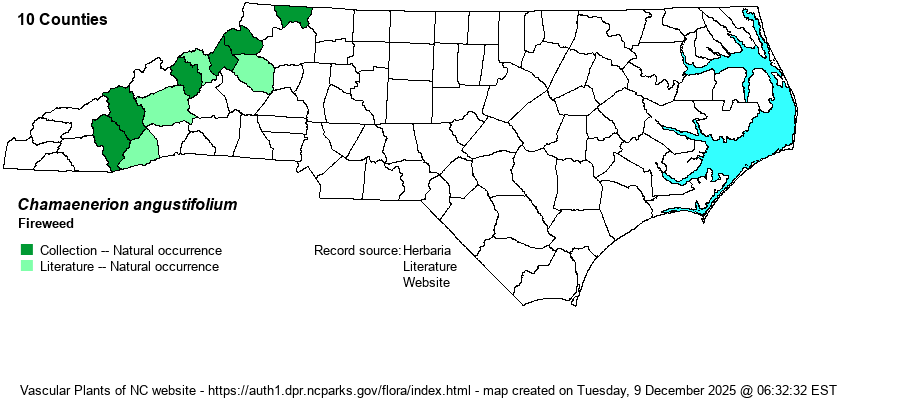| Author | (Linnaeus) Scopoli | |
| Distribution | Scattered in the Mountains, south to Jackson County, but essentially only at higher elevations (mostly over 4000 feet).
This is a Northern species with a huge east-west range. It occurs across Canada, Alaska, and the Western states, and in the East ranges south to NJ and OH, and south in the Appalachians to western NC. Several photos on iNaturalist are correctly identified and are from potential natural sites (Buncombe and Transylvania counties), but the editors have no idea of the physical locations, such as in places recently burned and away from human habitation (which would be more likely to be a natural occurrence). | |
| Abundance | Very rare to locally rare, and as it is a successional species that appears after fire and other disturbances, populations are quite erratic from year to year. This is a State Endangered species, and deservedly is an S1 species in the state. | |
| Habitat | This is a successional species growing in mostly disturbed places at high elevations, such as in recent burns, grassy balds, various fields, and even along roadsides. |
| Phenology | Blooms from July to September, and fruits shortly after flowering. | |
| Identification | This is a very familiar species to people in Canada and the Northern and Western states, but few have seen it in NC. It is a spectacular species when in full bloom, with a tall and robust stem, usually unbranched, to 5-8 feet tall. There are numerous, alternate leaves along the stem, each lanceolate, entire, about 4 inches long, and pale beneath. The top 1-foot or more of the stem is a spike-like raceme of numerous, large, rose-colored flowers. Each one has 4 rounded petals, and the spread flower averages about 1.2 inches across. The flower buds are drooping, providing an odd look to the raceme where the flowers have yet to bloom. The fruit are long and slender capsules, about 2 inches long but barely 1/10-inch wide. This species can occur in large stands, though more so north of NC, where a fire has passed through the area in recent months. | |
| Taxonomic Comments | This species, sadly and confusingly, has been transferred from genus to genus over the years. Decades ago, when RAB (1968) was published, the species was included with several very differently-flowered species in Epilobium, as E. angustifolium. It was moved to Chamerion, and now has been moved to Chamaenerion, now named as C. angustifolium. Many references retain it in Chamerion.
| |
| Other Common Name(s) | Great Willow-herb. Note that "Fireweed" is a common used name for a tall composite species -- Erechtites hieraciifolia, but many references use the alternative name of Burnweed or American Burnweed to avoid confusion using "Fireweed" for two very different species. | |
| State Rank | S1 | |
| Global Rank | G5 | |
| State Status | E | |
| US Status | | |
| USACE-agcp | FACU link |
| USACE-emp | FAC link |

